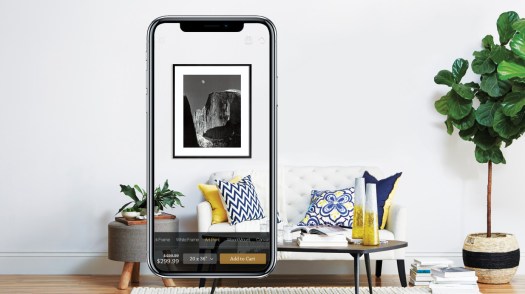Is all art for everyone? Are works that sell for millions in auction houses and street murals in urban playgrounds equally deserving of access for all? Increasingly technologists are signaling “YES” with clever products that not only introduce access to art, but call for active engagement.
Accessibility 1.0: distributive access
Accessibility 1.0, much like Web 1.0, focused on just getting the content distributed. These are online portals that make users able to see and learn about art, like Khan Academy’s art history content. Accessibility 1.0 focuses on the democratization of knowledge, much like Project Gutenberg, which has famously provided access to over 57,000 free eBooks.
Accessibility 2.0: putting the AR in art
Accessibility 2.0 is underway, with a new generation of tech-enabled art evangelists. They want historic art and art from your every day experience to be equally as accessible, physically and psychologically.
As augmented reality has become just an app download away, marketers and philanthropists alike have identified the opportunity to make art look and feel more tangible. Using Art.com‘s ArtView feature you can get a preview of what a piece looks like on your living room wall.

AR initiatives such as CMU’s Art Management & Technology Laboratory have also begun developing similar functionality for educational purposes; such initiatives can project historic paintings, statues, and structures, allowing for people to actively explore.
Accessibility 3.0: enabling creativity
Accessibility 3.0 has rolled out almost simultaneously. To its vanguards, accessibility means both being able to see and interact with art, as well as being able to make it.
Prisma is an exemplary app that transforms any ordinary photo into an impressionist piece a la Picasso or surrealist Salvador Dali at the touch of a screen. While mega companies are waiting at the wings to buy user behavior data, the technology allows a new level of personal expression in user generated content.
GalaPro is also opening another arts door to the disabled: theater. This new app interprets performances for deaf, blind, and non-English-speaking audiences, by providing audio descriptions, captioning, and dubbing. Twelve Broadway theaters now offer GalaPro. One show, Children of a Lesser God, features hearing, hard of hearing, and deaf actors. The show itself features full subtitles throughout using the same technology from GalaPro.
This rapid evolution of accessibility tools, providing knowledge and the opportunity for self-expression, makes art accessibility feel more achievable than ever. Invisible lines are being crossed and blurred and soon will be erased from our augmented view.
